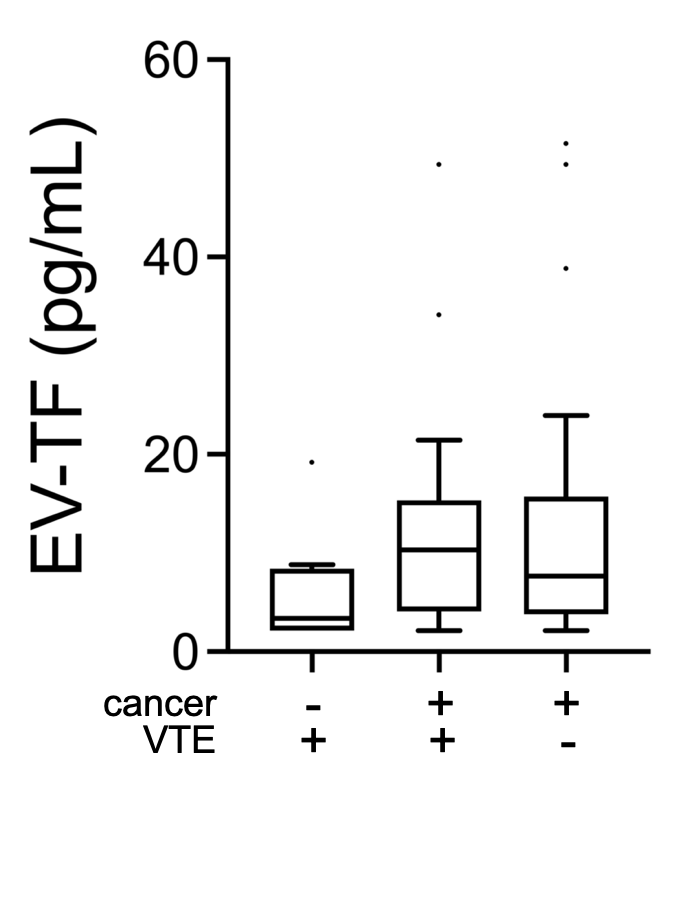Abstract
Background: Venous thromboembolism (VTE) and cancer are associated. Tissue factor, involved both in the initiation of blood coagulation and in the neoangiogenic processes that accompany cancer growth, circulates associated to extracellular vesicles (EV-TF). EV-TF has been studied as a biomarker of cancer-associated VTE, albeit with conflicting results. Direct comparisons of EV-TF between cancer-associated and non-cancer-associated VTE are lacking.
Aim: To compare EV-TF in non-cancer-associated VTE (NC-VTE), cancer-associated VTE (C-VTE) and cancer without VTE (C-w/o VTE).
Methods: We enrolled 57 patients (NC-VTE: n=11; C-VTE: n=18; C-w/o VTE: n=28). All patients with VTE were enrolled within 48 hours of diagnosis; non-VTE patients were recruited in the oncologic outpatient services. EV were isolated by differential centrifugation from 4 mL of peripheral blood; the final EV pellet (16,000xg for 45 min) was resuspended in 100 ?L saline and tested for TF with a one-stage clotting assay.
Results: There was a statistical trend for lower EV-TF in NC-VTE compared to both C-VTE and C-w/o VTE (p=.054; Kruskal-Wallis test). There was no significant difference between C-VTE and C-w/o VTE (figure).
Conclusions: These data lend support to the hypothesis that cancer represents, per se, a strong driver of EV-TF generation.